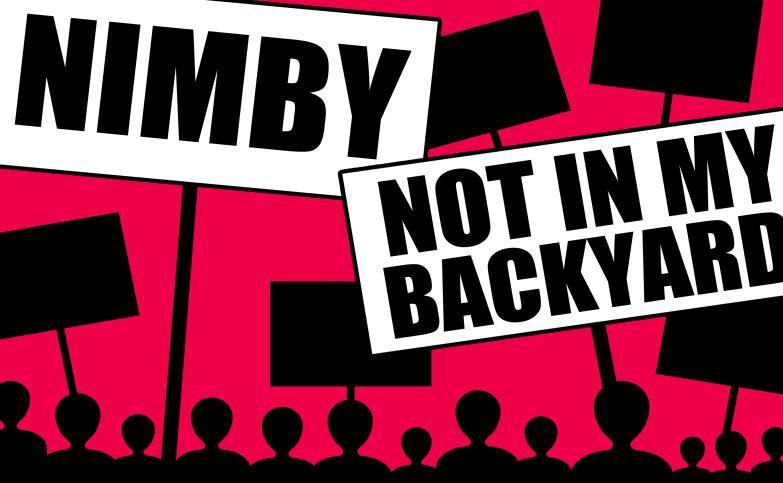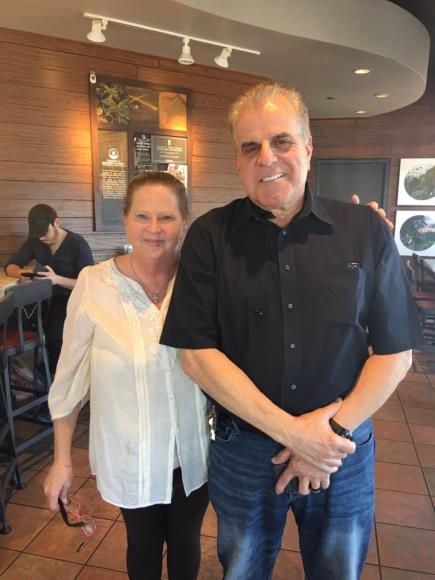
4 minute read
BE A GOOD NEIGHBOR
Working with the neighbors and NIMBY-ism’s
(Not In My Backyard Syndrome)
Advertisement
When I first started out in Los Angeles one of the primary things, I learned was to study the neighborhood in which you want to build. Many times, I found myself working like a reporter or a journalist. Doing your homework on neighborhoods is essential.
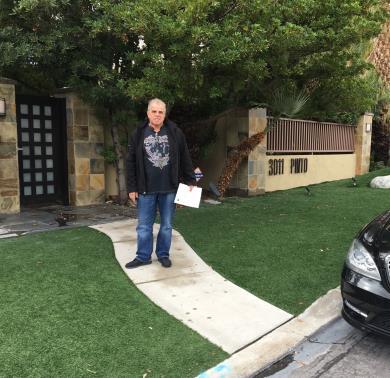
Step #1
• Start out with historic research of the city that you will be building in.
• The neighborhood that you will be building in.
• The site you’ll be building on.
This type of homework is essential before starting anything.
2017 Respecting the people who live in our city: Passing out neighborhood meeting invitations door to door for an upcoming neighborhood meeting. All inclusive and transparent.
This is what city planning should be like.
Step #2
• Conduct due diligence on the neighborhood in question.
• Conduct due diligence on the subdivision or tract you will be building in.
• Conduct due diligence on your immediate neighbors. It is extremely important to complete this research before doing any other work on the site.
With friend and former City of Las Vegas Planning Commissioner, Victoria Quinn, thank you for your years of friendship and support.
Step #3
• Make sure that this process is thorough and that you cover as many bases as you can.
• Meet your immediate neighbors.
• Keep in touch with your neighbors.
• Bond with your neighbors.
• Make sure that you exchange phone numbers, emails and other vital information to keep clear and open communication with your immediate neighbors.
• Keep in contact with the neighbors in the surrounding area.
• This is key and essential.
• Simultaneously and in conjunction with the above steps, meet with your local councilperson or ward chairperson. It is also essential to keep a clear and open communication channel with elected officials, especially the ones voting on your site.
• I especially recommend that you make contact with the staff at the city municipalities that you will be building in. In other words, make contact with the Mayor, Commissioner or City Councilperson or other officials that will most likely be voting on the approval of your project at some point in some fashion. This will happen, so please make sure that you make contact with these folks and that you keep them apprised throughout the process of how your project is progressing.
Once the above has been done simultaneously meet with your architects and designers and engineers to develop the initial diagrams and sketches for the design. This is essential.
Once you have thoroughly briefed local electric officials, local staff and jurisdictions, i.e., planning department, public works, code enforcement, and other bureaucratic components or departments, meet also simultaneously and continuously with the local neighbors particularly the ones that touch your property line. Please note that every jurisdiction may have required neighborhood meetings so make sure that you work closely with municipal staff members and elected officials on the issue of neighborhood meetings. Utilize social media outlets to announce and document such meetings and make sure that you follow all instructions regarding neighborhood meetings so that the meeting places, dates and times are properly posted.
It I highly suggested to retain professional consultancy every step along the way and throughout the duration of the development. Do not attempt to do things on your own in areas that you have no expertise and especially areas that require licensure.
Once this process is complete, then call a neighborhood meeting before any applications are submitted. This is key to help avoid "NIMBYISM" or "not in my backyard syndrome" (see the Wikipedia definition at the end of this chapter) so that the neighbors do not feel alienated by the more-oftenthan-not arrogant nature of most developers. Most developers wait until the absolute last minute to present their designs and ideas because it doesn’t give the neighbors a chance to review it, to provide input, to like it, to hate it, or anything and everything in between.
Following this process in a methodical manner and a professional manner is absolutely essential to getting the approval of any entitlement that you will want for this site and for your project.
Keeping in communication with staff, elected officials, and neighbors is essential and critical.
Depending on the size, scale and scope of your development, it is often recommended to hold a neighborhood meeting. On minor entitlement actions, a neighborhood meeting may not be required but more often than not it is highly suggested to at least go door to door and introduce yourself as the owners/developers and brief the neighbors. I have seen so many times where the developers show up with arrogant, negative and cynical attitudes about the neighbors and, many times, they talk down to them, they treat them in an unprofessional manner, and they assume because they have money and power, they can get whatever they want. Nothing could be further from the truth. Over the years, neighbors have become empowered, and they do not just lie down and roll over. Also, many times, newer neighborhoods have a homeowner’s association/HOA. You must also conform with the standards of the architectural regulations and limitations for new development. It is highly recommended that you make good contact and make good friends with neighbors immediately adjacent to your development. Following the above outline will save you time, effort and money with the guidance of professionals heavily experienced with the development process.
According to Wikipedia, the term NIMBYISM is defined:
The word appears in a June 1980 newspaper article from Virginia, with the origin of the phrase explained thus:
Some call it the Nimby Syndrome. That's Nimby, as in "Not-in-my-back-yard"
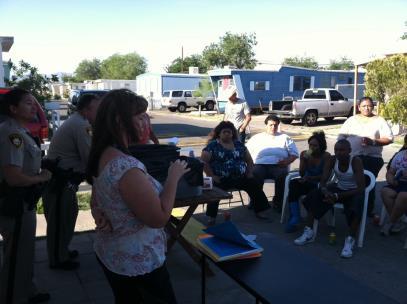
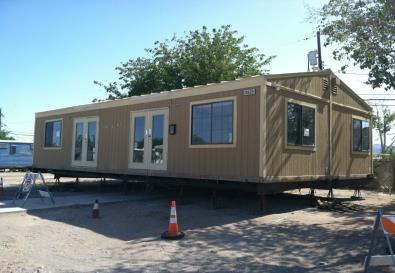
The phrase '"not in my back yard" syndrome, without the acronym, is found from February of the same year. The Oxford English Dictionary earliest citation is a Christian Science Monitor article from November 1980, although even there the author indicates the term is already used in the hazardous waste industry.
The concept behind the term, that of locally organized resistance to unwanted land uses, is likely to have originated earlier. One suggestion is it emerged in the 1950s.
In the 1980s, the term was popularized by British politician Nicholas Ridley, who was Conservative Secretary of State. Comedian George Carlin used the term in 1992 for his Jammin' in New York special, implying that people had already heard of it.
The NIMBY acronym has also been used by social scientists since the early 1980s to describe the resistance of communities to the siting of controversial facilities and land use.
The term's connotation has harshened since its introduction in the 1980s. Beyond their impact on any single development or neighborhood, NIMBY organizations and policies are now painted as worsening racial segregation, deepening economic inequality, and limiting the overall supply of affordable housing.
